

Our Courses
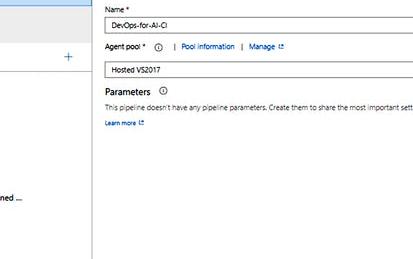
Creando un proceso de MLOps con Azure Machine Learning
En este proyecto, vamos a levantar de forma simple un proceso DevOps con modelos de Machine Learning para entender todo un proceso MLOps.
-
Course by

-
 Self Paced
Self Paced
-
 4 hours
4 hours
-
 Spanish
Spanish
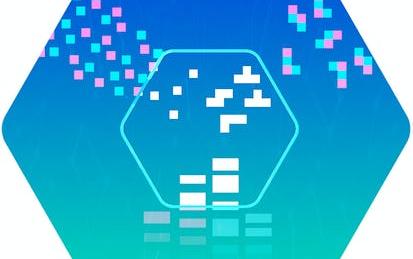
Building Resilient Streaming Systems on GCP em Português Brasileiro
Este curso rápido sob demanda tem uma semana de duração e é baseado no Google Cloud Platform Big Data and Machine Learning Fundamentals. Por meio de videoaulas, demonstrações e laboratórios práticos, os participantes aprenderão a criar pipelines de dados de streaming usando o Google Cloud Pub/Sub e o Dataflow para a tomada de decisões em tempo real.
-
Course by

-
 Self Paced
Self Paced
-
 Portuguese
Portuguese

Machine Learning Aplicado ao Marketing
A área de marketing foi uma das que mais progrediu em termos de gestão de dados e coleta de informações de clientes e passou de processos manuais e cheio de regras engessadas para aplicativos conectados e que estão a um toque de distância, o que traz um retorno positivo na receita e melhora a experiência dos clientes.
-
Course by

-
 Portuguese
Portuguese

Python per la Data Science
Python per la Data Science è un corso cruciale per qualsiasi professionista che voglia analizzare grandi quantità di dati attraverso le più recenti tecniche di machine Learning e Deep learning. Il core del corso è rappresentato dall’utilizzo dei notebook: una nuova forma di fruizione dei contenuti didattici in cui testo e teoria sono affiancati a numerosi codici eseguibili e modificabili. Il formato è visivamente simile ad un file PDF a cui si aggiunge l’interattività tipica dei prodotti software. Il risultato?
-
Course by

-
 Self Paced
Self Paced
-
 19 hours
19 hours
-
 Italian
Italian
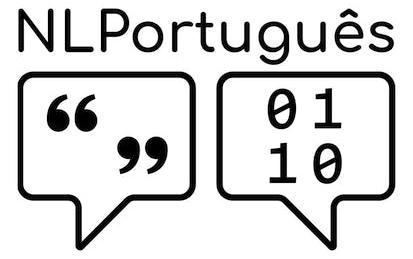
Processamento Neural de Linguagem Natural em Português I
Berm vindo ao curso de Processamento Neural de Linguagem Natural em Português I, oferecido pelo Departamento de Ciência da Computação do Instituto de Matemática e Estatistica da USP, com apoio do C4AI – USP-IBM-Fapesp Center for Artificial Intelligence e com apoio da Google. Neste curso você irá aprender como o Machine learning (aprendizado de máquina) pode ser usado para processar textos em português.
-
Course by

-
 Self Paced
Self Paced
-
 Portuguese
Portuguese

Smart Analytics, Machine Learning, and AI on GCP 日本語版
ML をデータ パイプラインに組み込むと、データから分析情報を抽出する能力を向上できます。このコースでは、Google Cloud でデータ パイプラインに ML を含める複数の方法について説明します。カスタマイズがほとんど、またはまったく必要ない場合のために、このコースでは AutoML について説明します。よりカスタマイズされた ML 機能については、Notebooks と BigQuery の機械学習(BigQuery ML)を紹介します。また、Vertex AI を使用して ML ソリューションを本番環境に導入する方法も説明します。
-
Course by

-
 Self Paced
Self Paced
-
 Japanese
Japanese
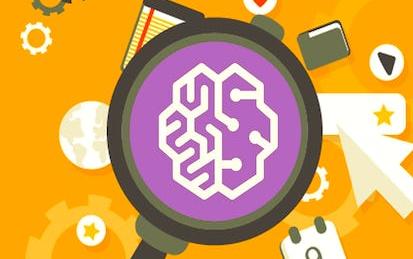
Explore insights from text analysis using Amazon Comprehend
In this one-hour project, you will understand how Amazon Comprehend works and how you can use the power of Natual Language Processing, NLP, and Machine Learning to extract information and explore insights from text.
-
Course by

-
 Self Paced
Self Paced
-
 2 hours
2 hours
-
 English
English

CNNs with TensorFlow: Basics of Machine Learning
In this 90-min long project-based course you will learn how to use Tensorflow to construct neural network models. Specifically, we will design, execute, and evaluate a neural network model to help a retail company with their marketing campaign by classifying images of clothing items into 10 different categories. Throughout this course, you will learn how to use Tensorflow to build and analyze neural neural networks that can perform multi-label classification for applications in image recognition.
-
Course by

-
 Self Paced
Self Paced
-
 3 hours
3 hours
-
 English
English

Data Science Coding Challenge: Loan Default Prediction
In this coding challenge, you'll compete with other learners to achieve the highest prediction accuracy on a machine learning problem. You'll use Python and a Jupyter Notebook to work with a real-world dataset and build a prediction or classification model. Important Information: How to register? To participate, you’ll need to complete simple steps. First, click the “Start Project” button to register. Next, you’ll need to create a Coursera Skills Profile, which only takes a few minutes.
-
Course by

-
 Self Paced
Self Paced
-
 3 hours
3 hours
-
 English
English

Tensorflow : Analyse de Sentiments avec Word Embedding
Dans ce projet guidé, vous créerez un modèle de Machine Learning d’analyse de sentiments par classification de textes avec Tensorflow, en utilisant le plongement de mots (Word Embedding).
-
Course by

-
 Self Paced
Self Paced
-
 2 hours
2 hours
-
 French
French

TensorFlow for Beginners: Basic Binary Image Classification
The goal of this project is to introduce beginners to the basic concepts of machine learning using TensorFlow. The project will include, how to set up the tool and get started as well as understanding the fundamentals of machine learning/neural network model and its key concepts. Learning how to use TensorFlow for implementing machine learning algorithms, data preprocessing, supervised learning. Additionally, learners develop skills in evaluating and deploying machine learning models using TensorFlow.
-
Course by

-
 Self Paced
Self Paced
-
 4 hours
4 hours
-
 English
English
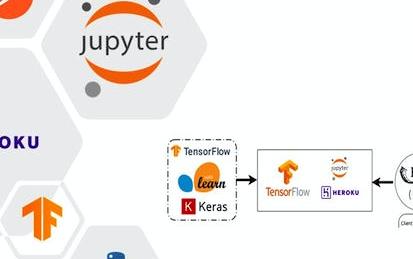
Machine Learning y Regresión con PySpark. Guía paso a paso
Es un curso práctico y efectivo para aprender a generar modelos de regresión (Machine Learning) con PySpark en un entorno de Big Data.
-
Course by

-
 2 hours
2 hours
-
 Spanish
Spanish

What is Machine Learning?
This series of short videos and accompanying in-classroom lessons will introduce you and your students to how artificial intelligence works and why it matters. You can choose individual lessons based on topic, explore the whole series of topics in one class or teach all 7 lessons to give a deeper dive. Join our movement and register at https://studio.code.org/users/sign_in and learn more at https://code.org/ai/how-ai-works and at https://studio.code.org/courses
-
Course by

-
 3 min
3 min
-
 English
English

Training AI with Humans
In the course "Training AI with Humans", you'll delve into the intersection of machine learning and human collaboration, exploring how to enhance AI performance through effective data annotation and crowdsourcing.
-
Course by

-
 Self Paced
Self Paced

Introduction to AI
Discover how AI works and explore foundational AI concepts, such as machine learning. Learn about the rise of generative AI and how to perform tasks with it. By the end of this course, you’ll have an understanding of the capabilities and limitations of AI tools and how to integrate generative AI in the workplace.
-
Course by

-
 Self Paced
Self Paced
-
 1 hour
1 hour

Azure ML: Deploying, Managing, and Experimenting with Models
This course is designed to provide a comprehensive foundation in Azure Machine Learning, equipping learners with essential skills for managing ML workflows within the Azure ML workspace. Participants will begin by understanding core workspace fundamentals, including environment setup, resource management, and key components for ML experimentation.
-
Course by

-
 Self Paced
Self Paced
-
 7 hours
7 hours

The Power of Machine Learning: Boost Business, Accumulate Clicks, Fight Fraud, and Deny Deadbeats
It's the age of machine learning. Companies are seizing upon the power of this technology to combat risk, boost sales, cut costs, block fraud, streamline manufacturing, conquer spam, toughen crime fighting, and win elections. Want to tap that potential? It's best to start with a holistic, business-oriented course on machine learning – no matter whether you’re more on the tech or the business side. After all, successfully deploying machine learning relies on savvy business leadership just as much as it relies on technical skill.
-
Course by

-
 Self Paced
Self Paced
-
 14 hours
14 hours
-
 English
English
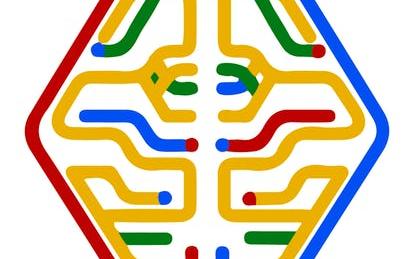
Production Machine Learning Systems
In this course, we dive into the components and best practices of building high-performing ML systems in production environments. We cover some of the most common considerations behind building these systems, e.g. static training, dynamic training, static inference, dynamic inference, distributed TensorFlow, and TPUs. This course is devoted to exploring the characteristics that make for a good ML system beyond its ability to make good predictions.
-
Course by

-
 Self Paced
Self Paced
-
 19 hours
19 hours
-
 English
English

Information Extraction from Free Text Data in Health
In this MOOC, you will be introduced to advanced machine learning and natural language processing techniques to parse and extract information from unstructured text documents in healthcare, such as clinical notes, radiology reports, and discharge summaries. Whether you are an aspiring data scientist or an early or mid-career professional in data science or information technology in healthcare, it is critical that you keep up-to-date your skills in information extraction and analysis.
-
Course by

-
 Self Paced
Self Paced
-
 24 hours
24 hours
-
 English
English

A Crash Course in Data Science
By now you have definitely heard about data science and big data. In this one-week class, we will provide a crash course in what these terms mean and how they play a role in successful organizations. This class is for anyone who wants to learn what all the data science action is about, including those who will eventually need to manage data scientists. The goal is to get you up to speed as quickly as possible on data science without all the fluff.
-
Course by

-
 Self Paced
Self Paced
-
 7 hours
7 hours
-
 English
English

Mathematics for Machine Learning: Linear Algebra
In this course on Linear Algebra we look at what linear algebra is and how it relates to vectors and matrices. Then we look through what vectors and matrices are and how to work with them, including the knotty problem of eigenvalues and eigenvectors, and how to use these to solve problems.
-
Course by

-
 Self Paced
Self Paced
-
 19 hours
19 hours
-
 English
English

AI For Medical Treatment
AI is transforming the practice of medicine. It’s helping doctors diagnose patients more accurately, make predictions about patients’ future health, and recommend better treatments. This Specialization will give you practical experience in applying machine learning to concrete problems in medicine. Medical treatment may impact patients differently based on their existing health conditions. In this third course, you’ll recommend treatments more suited to individual patients using data from randomized control trials.
-
Course by

-
 22 hours
22 hours
-
 English
English

AI for Medical Prognosis
AI is transforming the practice of medicine. It’s helping doctors diagnose patients more accurately, make predictions about patients’ future health, and recommend better treatments. This Specialization will give you practical experience in applying machine learning to concrete problems in medicine. Machine learning is a powerful tool for prognosis, a branch of medicine that specializes in predicting the future health of patients. In this second course, you’ll walk through multiple examples of prognostic tasks.
-
Course by

-
 30 hours
30 hours
-
 English
English

Big Data, Artificial Intelligence, and Ethics
This course gives you context and first-hand experience with the two major catalyzers of the computational science revolution: big data and artificial intelligence. With more than 99% of all mediated information in digital format and with 98% of the world population using digital technology, humanity produces an impressive digital footprint. In theory, this provides unprecedented opportunities to understand and shape society. In practice, the only way this information deluge can be processed is through using the same digital technologies that produced it.
-
Course by

-
 Self Paced
Self Paced
-
 12 hours
12 hours
-
 English
English
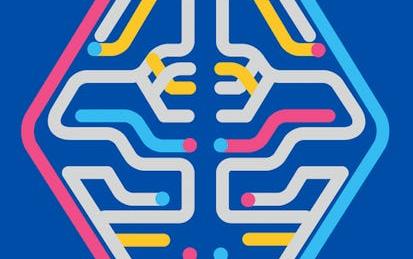
How Google does Machine Learning
This course explores what ML is and what problems it can solve. The course also discusses best practices for implementing machine learning. You’re introduced to Vertex AI, a unified platform to quickly build, train, and deploy AutoML machine learning models. The course discusses the five phases of converting a candidate use case to be driven by machine learning, and why it’s important to not skip them. The course ends with recognizing the biases that ML can amplify and how to recognize them.
-
Course by

-
 Self Paced
Self Paced
-
 11 hours
11 hours
-
 English
English



